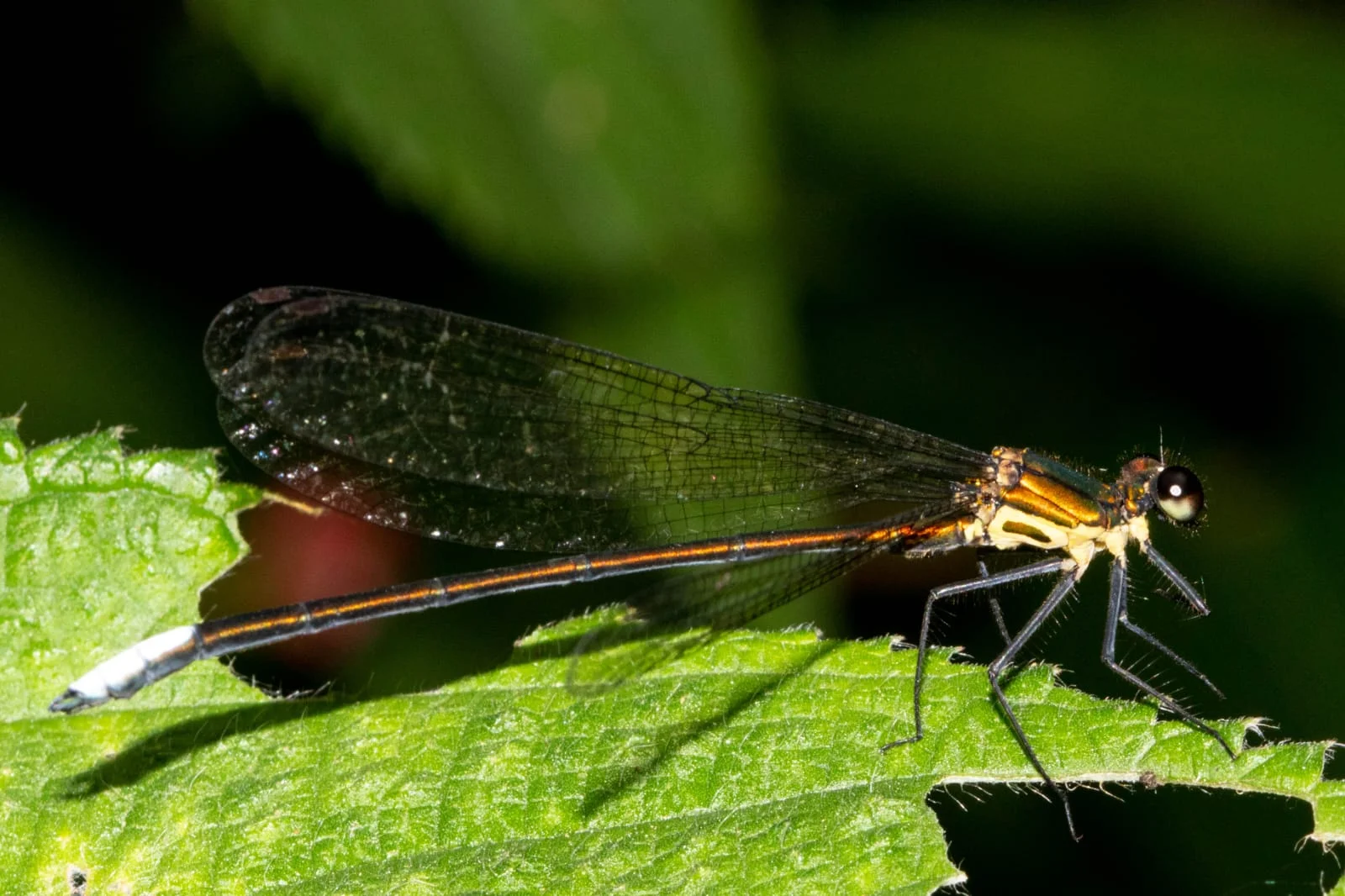- Courses
- GS Full Course 1 Year
- GS Full Course 2 Year
- GS Full Course 3 Year
- GS Full Course Till Selection
- Online Program
- GS Recorded Course
- NCERT (Recorded 500+ Hours)
- Polity Recorded Course
- Geography Recorded Course
- Economy Recorded Course
- AMAC Recorded Course
- Modern India, Post Independence & World History
- Environment Recoded Course
- Governance Recoded Course
- Science & Tech. Recoded Course
- International Relations and Internal Security Recorded Course
- Disaster Management Module Course
- Ethics Recoded Course
- Essay Recoded Course
- Current Affairs Recoded Course
- CSAT
- 5 LAYERED ARJUNA Mentorship
- Public Administration Optional
- ABOUT US
- OUR TOPPERS
- TEST SERIES
- FREE STUDY MATERIAL
- VIDEOS
- CONTACT US
PLACES IN NEWS 24th FEBRUARY 2025
PLACES IN NEWS 24th FEBRUARY 2025

Bhavani River
Why in news?
a. The Tamil Nadu Public Health and Preventive Medicine Department determined that the Bhavani River water in Palaiyur village, was unfit for drinking due to safety concerns.
About Bhavani River:
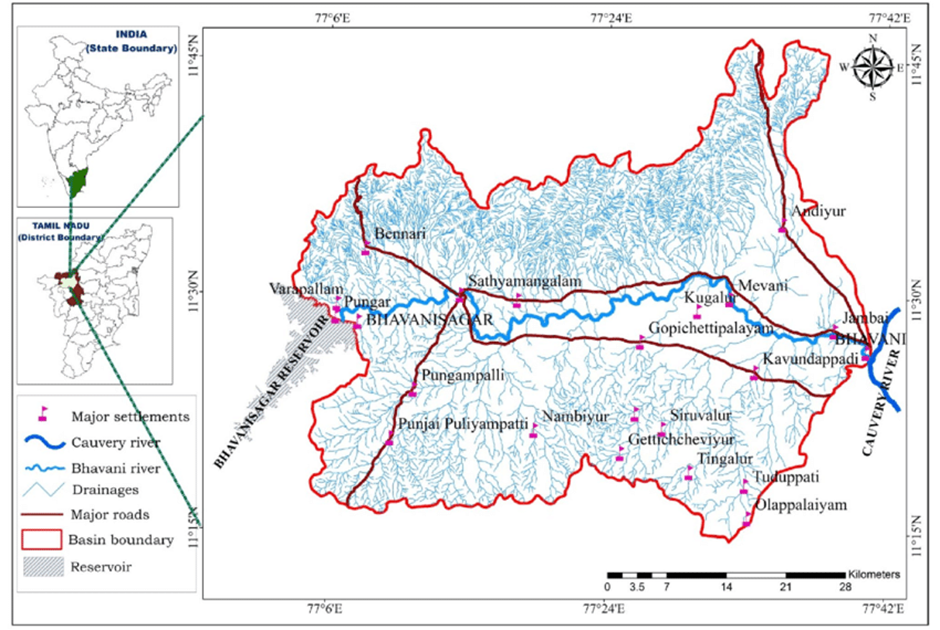
1. Origin and Path:
a. The Bhavani River originates from the upper regions of the Nilgiris in the Western Ghats and flows through Tamil Nadu, Kerala, and Karnataka
b. It travels 185 km across three districts of Tamil Nadu—Nilgiris, Coimbatore, and Erode—before merging with the Cauvery River at Bhavani town.
c. The river is a major tributary of the Cauvery and is the second largest river in Tamil Nadu.
d. Bhavanisagar Dam, one of the largest earthen dams in the world, is constructed on this river for irrigation and hydropower.
e. The river’s drainage basin spans 6,200 square kilometres, with 87% in Tamil Nadu, 9% in Kerala, and 4% in Karnataka.
f. The primary tributaries of Bhavani include West and East Varagar, which originate in the Nilgiris.
2. Reasons for Poor Water Quality:
a. Industrial and domestic pollution have significantly deteriorated the water quality, particularly in Palaiyur village.
b. The river has been contaminated by the unregulated discharge of effluents from textile, dyeing, and other industries in the Coimbatore and Erode districts.
c. Excessive agricultural runoff, including fertilisers and pesticides, has led to water pollution and ecosystem degradation.
d. Sand mining and deforestation in the catchment area have increased sedimentation, affecting the river’s self-purification ability.
e. The high dependence on river water for agriculture (90%) has reduced water flow, exacerbating pollution concentration.
f. To restore the Bhavani River's health, strict pollution control measures, sustainable water management, and conservation initiatives are needed.
Palamu Tiger Reserve
Why in news?
a. For the first time in Jharkhand, a tiger that left Palamu Tiger Reserve and roamed Dalma Wildlife Sanctuary and West Bengal’s Purulia will be relocated back to its original habitat.
About Palamu Tiger Reserve:
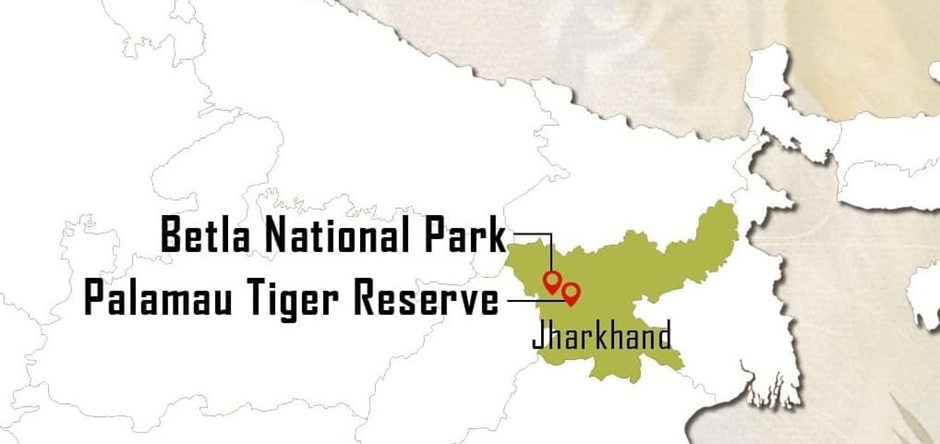
1. Location:
a. Palamu Tiger Reserve (PTR) is in the Chhota Nagpur Plateau region of Jharkhand and is part of Betla National Park.
b. It is among the first nine tiger reserves established under Project Tiger in India.
c. PTR holds historical significance as the first reserve in the world where a tiger census was conducted using pugmark count in 1932, under the supervision of J.W. Nicholson.
d. The reserve is intersected by three rivers—North Koyal, Auranga, and Burha, with Burha being the only perennial river in the drought-prone area.
e. The region is rich in minerals, including bauxite and coal.
2. Flora and Fauna:
a. The vegetation in PTR is predominantly Northern Tropical Dry Deciduous forests, dominated by Sal (Shorea robusta) and its associated species.
b. Small patches of Northern Tropical Moist Deciduous forests also exist within the reserve.
c. Other common tree species include Acacia, Mahua, Indian Laurel, Flame of the Forest, Red Sandalwood, and Axlewood.
d. PTR hosts diverse wildlife, including key species like the Bengal Tiger, Asiatic Elephant, Leopard, Grey Wolf, and Wild Dog.
e. Other significant animals include Gaur, Sloth Bear, and Four-Horned Antelope, contributing to the reserve’s ecological importance.
f. The reserve plays a crucial role in tiger conservation and serves as a vital habitat for various endangered species.
About Dalma Wildlife Sanctuary:
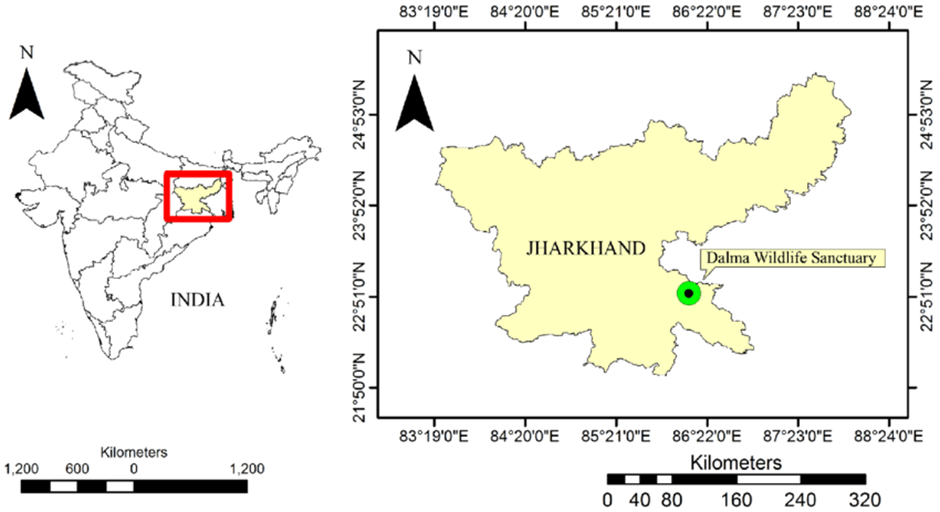
a. Dalma Wildlife Sanctuary is located in Jharkhand, near Jamshedpur, and extends into West Bengal’s Purulia district.
b. Spread over 195 square kilometres, it is situated on the Dalma Hills, with elevations ranging between 300 to 900 meters.
c. The sanctuary is known for its dense forests, hilly terrain, and natural water sources, making it an important wildlife habitat.
d. The sanctuary primarily consists of dry deciduous forests, dominated by trees like Sal, Mahua, Jamun, and Bamboo.
Seasonal streams and small water bodies support the rich biodiversity of the region.
e. Dalma is famous for its Asiatic elephants, which frequently migrate across the region.
f. Other key species include leopards, barking deer, sloth bears, wild boars, and porcupines.
g. It is also home to various birds and reptiles, making it a significant wildlife conservation area in eastern India.
Gulf of Tonkin
Why in news?
a. Vietnam's foreign ministry recently released a map outlining its baseline territorial claim in the Gulf of Tonkin.
About Gulf of Tonkin:
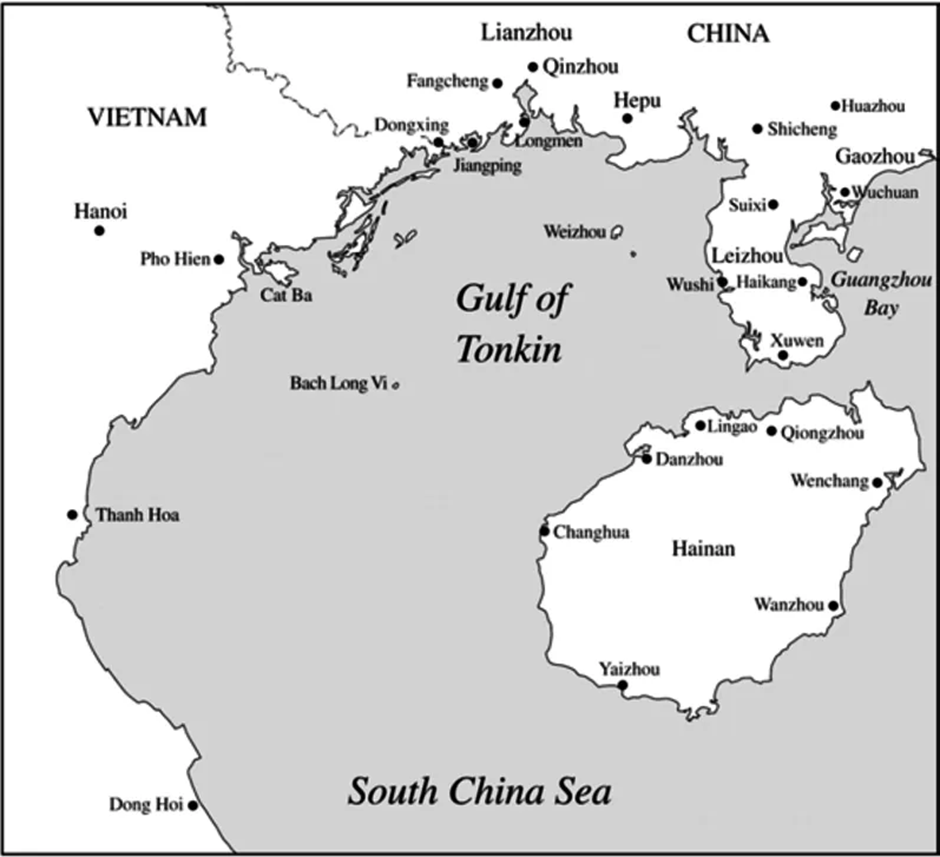
1. Location and Geography:
a. The Gulf of Tonkin, known as “Beibu Gulf” in Chinese and “Bac Bo Gulf” in Vietnamese, is a crescent-shaped, shallow, semi-enclosed water body in the northwestern part of the South China Sea.
b. It lies off the coasts of South China and Northern Vietnam and serves as an important maritime region in the Indo-Pacific.
c. The gulf is bordered by Vietnam’s northern coastline in the west and northwest, China’s Guangxi Zhuang Autonomous Region in the north, and the Leizhou Peninsula and Hainan Island in the east.
d. It connects to the South China Sea through its southern opening and also links to the Hainan Strait in the northeast.
e. Several rivers flow into the Gulf of Tonkin, with Vietnam’s Red River being the most significant contributor.
f. The region hosts major ports, including Haiphong and Ben Thuy in Vietnam and Beihai (Pakhoi) in China, making it a key hub for regional maritime trade.
2. Geopolitical Significance:
a. The Gulf of Tonkin holds immense strategic and economic importance for both Vietnam and China, given its role in trade, fisheries, and energy exploration.
b. The region is a crucial access point to the South China Sea, one of the world's busiest shipping lanes, and a source of significant oil and gas reserves.
c. The Gulf also plays a critical role in regional security, as both China and Vietnam have sought to expand their influence over its waters, leading to geopolitical tensions.
d. The area has historical significance, as it was the site of the Gulf of Tonkin Incident in 1964, which escalated U.S. military involvement in the Vietnam War.
3. China-Vietnam Rivalry in the Gulf of Tonkin:
a. Territorial Claims: China and Vietnam have overlapping claims in the Gulf of Tonkin. While both countries signed an agreement in 2000 to demarcate part of the gulf, disputes over maritime rights and fishing zones continue.
b. Fishing Disputes: The gulf is a rich fishing ground, leading to frequent clashes between Vietnamese fishermen and Chinese authorities. China has imposed seasonal fishing bans, which Vietnam strongly opposes.
c. Energy Exploration: Both nations seek to exploit the oil and gas reserves in the region. China’s aggressive survey missions and drilling activities near disputed areas have heightened tensions.
d. Chinese Naval Presence: China has increased its naval and coast guard patrols in the region, asserting control over strategic waterways. This has led to confrontations with Vietnamese vessels.
e. Vietnam’s Response: Vietnam has strengthened defence cooperation with regional and global powers, including the United States, India, and Japan, to counter China’s growing influence in the region.
Andaman Sea
Why in news?
a. A 5.2-magnitude earthquake struck the Andaman Sea near Malaysia, as reported by the National Centre for Seismology.
About Andaman Sea:
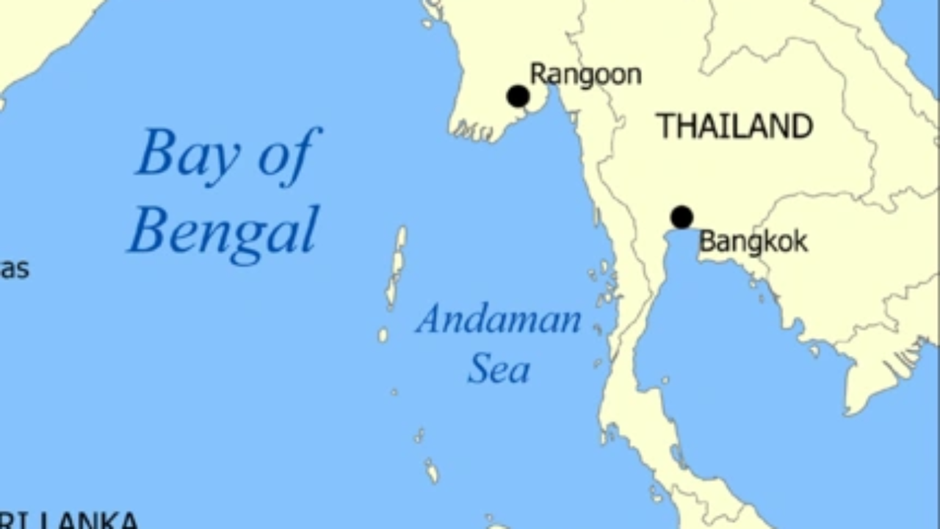
1. Location and Geography:
a. The Andaman Sea is a semi-enclosed marginal sea located in the north-eastern Indian Ocean. It lies between the eastern coast of India and the Malay Peninsula, with Myanmar to the north and Sumatra (Indonesia) to the south. The Bay of Bengal borders it to the west, while the Strait of Malacca connects it to the South China Sea in the east.
b. Covering an area of approximately 307,994 square miles, the sea stretches 750 miles in length and 400 miles in width.
c. The Irrawaddy River in Myanmar is the only major river that empties into the Andaman Sea, contributing to its nutrient-rich waters.
2. Geophysical Characteristics:
a. The Andaman Sea is part of the Sunda Plate and features a tectonically active plate boundary.
b. It lies at the convergence of the Indian Plate (northwest) and the Australian Plate (southeast), forming the Andaman Basin, which contains undersea ridges, trenches, and faults.
c. A key geological feature is the Andaman Trench, created by the subduction of the Indian Plate beneath the Eurasian Plate.
d. This tectonic activity makes the region highly seismically active, leading to earthquakes and volcanic eruptions.
e. The area has witnessed major seismic events, including the 2004 Indian Ocean earthquake and tsunami.
3. Ecosystem and Biodiversity:
a. The Andaman Sea is an ecologically rich marine region, supporting coral reefs, seagrass meadows, and mangrove forests.
b. These ecosystems provide habitats for diverse marine life, including sea turtles, dugongs, dolphins, and a variety of fish species.
c. Additionally, the sea is a crucial zone for migratory birds, forming part of the East Asian-Australasian Flyway.
d. It serves as a breeding and feeding ground for several marine and avian species, making it an important site for conservation efforts.
Kuno National Park
Why in news?
a. Recently, five cheetahs were introduced into the wild at Kuno National Park in Madhya Pradesh's Sheopur district as part of ongoing conservation efforts.
About Kuno National Park:
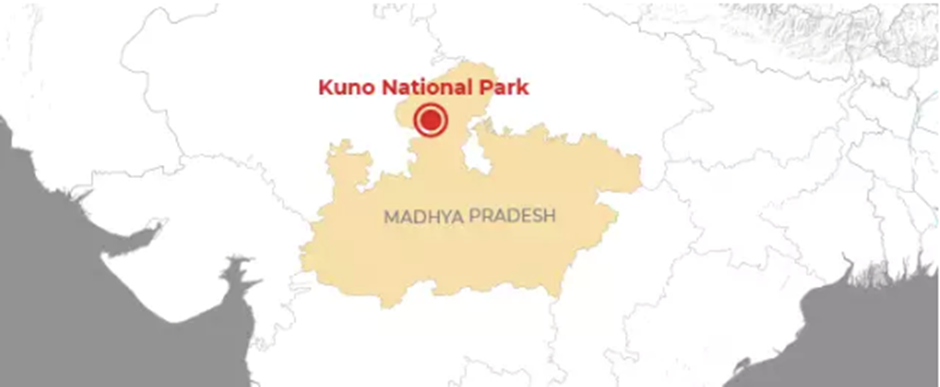
1. Location and Geography:
a. Kuno National Park (KNP) is located in the Morena and Sheopur districts of Madhya Pradesh, near the Vindhyan Hills.
b. Spanning an area of 750 sq. km, the park derives its name from the Kuno River, a major tributary of the Chambal River, which flows through the region.
c. Originally established as a wildlife sanctuary, Kuno was upgraded to national park status in 2018.
d. It was selected under the ‘Action Plan for Introduction of Cheetah in India’, making it a crucial site for wildlife conservation.
2. Flora and Fauna:
a. Kuno primarily consists of grassland ecosystems, with rocky outcrops scattered throughout. The forested areas are mixed forests, dominated by tree species like Kardhai, Salai, and Khair.
b. The park is home to a rich variety of plant life, including 123 tree species, 71 shrub species, 32 exotic and climbing species, and 34 bamboo and grass species.
c. Kuno National Park supports a diverse range of wildlife. Key carnivores found in the park include the Indian leopard, jungle cat, Indian wolf, striped hyena, golden jackal, Bengal fox, dhole (wild dog), and sloth bear.
d. In addition to these, the park provides habitat for over 120 bird species, enhancing its ecological significance.
e. With the recent reintroduction of cheetahs, Kuno has gained prominence as an important site for India’s conservation efforts, particularly for restoring the population of this extinct species in the country.
|
UPSC CSE PYQs
Q1. Consider the following pairs:
Which of the pairs given above is/are correctly matched? (2020)
Answer: Option C |
|
Also Read |
|
| FREE NIOS Books | |




